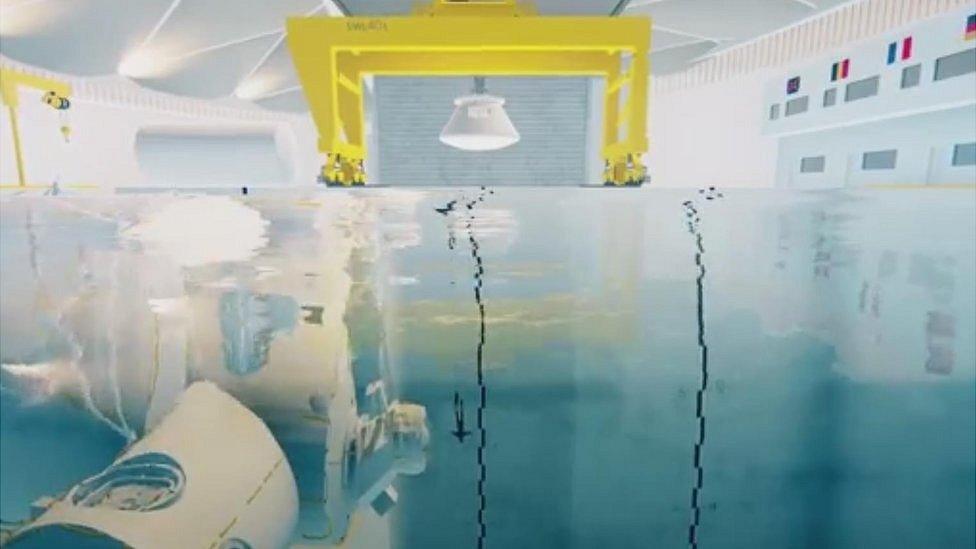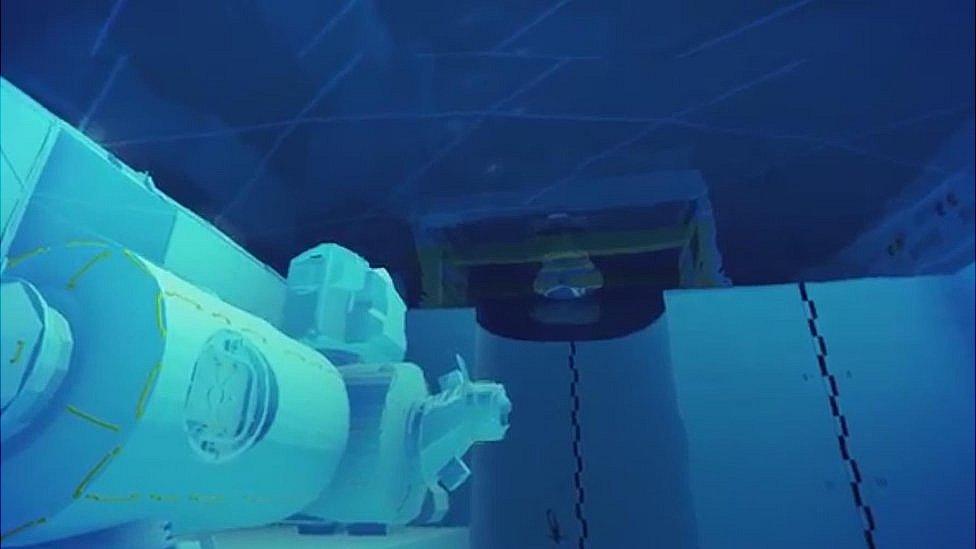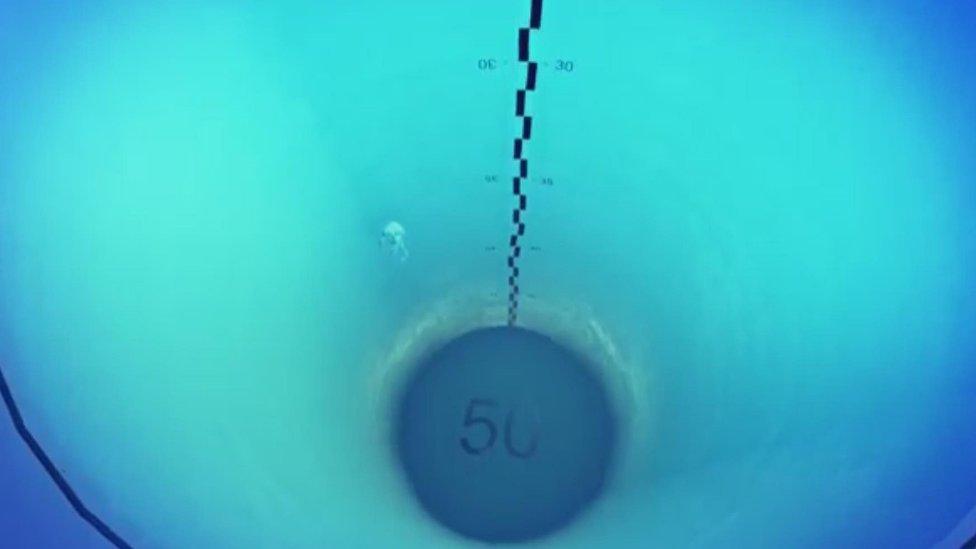Virtual tour of 'world's deepest space pool' released
- Published
Images of world's deepest space pool planned for Essex are released
A virtual tour of the world's "deepest" swimming pool has been released.
The proposed 50m (164ft) deep pool at the University of Essex would be used for spaceflight and human endurance research.
It would simulate the microgravity of outer space, and would be far deeper than NASA's own 12m (40ft) deep training pool in Houston, Texas.
The project, which has been backed by British astronaut Major Tim Peake, is expected to cost £40m.
John Vickers, chief executive of Blue Abyss, said construction is expected to take between 18 months and two years.

The tour of the pool starts just above the water level where lifting equipment and flags of various countries can be seen at the side
Mr Vickers said the pool could be used for human spaceflight research programmes, environmental monitoring, training in advanced commercial diving techniques, marine and human physiology research and aerospace development.
He has been in discussions about the pool with both the European Space Agency and the Chinese authorities, he said. "We want this to be a global facility," he said.
'Visceral'
The world's current deepest pool is the Y-40 diving pool in Montegrotto Terme, Italy, which is 42m (137ft) deep.
Maj Peake, who carried out a European Space Agency (ESA) spacewalk in January, has previously voiced his support for project, saying it would "be an outstanding European facility".

The viewer is then taken under water into a large main section of the pool where there are various ledgers and other divers around

And at the bottom of the pool tube is a sign showing the eventual depth of 50m (164ft)
Mr Vickers said the digital depiction of the pool made him feel "giddy" when he first saw it using a virtual reality headset.
"It brought my vision to life. I had not expected it to be as visceral an experience as it turned out to be," he said.
"People can now see what I've been thinking about and if this facility can help young people get more involved or interested in our marine environment then that would be great."
- Published22 July 2015

- Published16 May 2013
